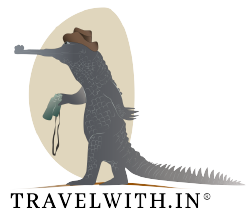If your travels find you in Eastern Uttar Pradesh (Lucknow) then a trip to Dudhwa National Park is definitely warranted. It’s a 4 to 5 hour drive from Lucknow and is worth it if you’re interested in seeing a variety of birds and mammals such as the tiger, rhinos and the western swamp deer (barasingha). Located on the Indo-Nepal border, Dudhwa National Park falls in the Terai belt of marshy grasslands touching the Himalayan foothills. The Terai belt is a very productive part of the country and agriculture is a major occupation.
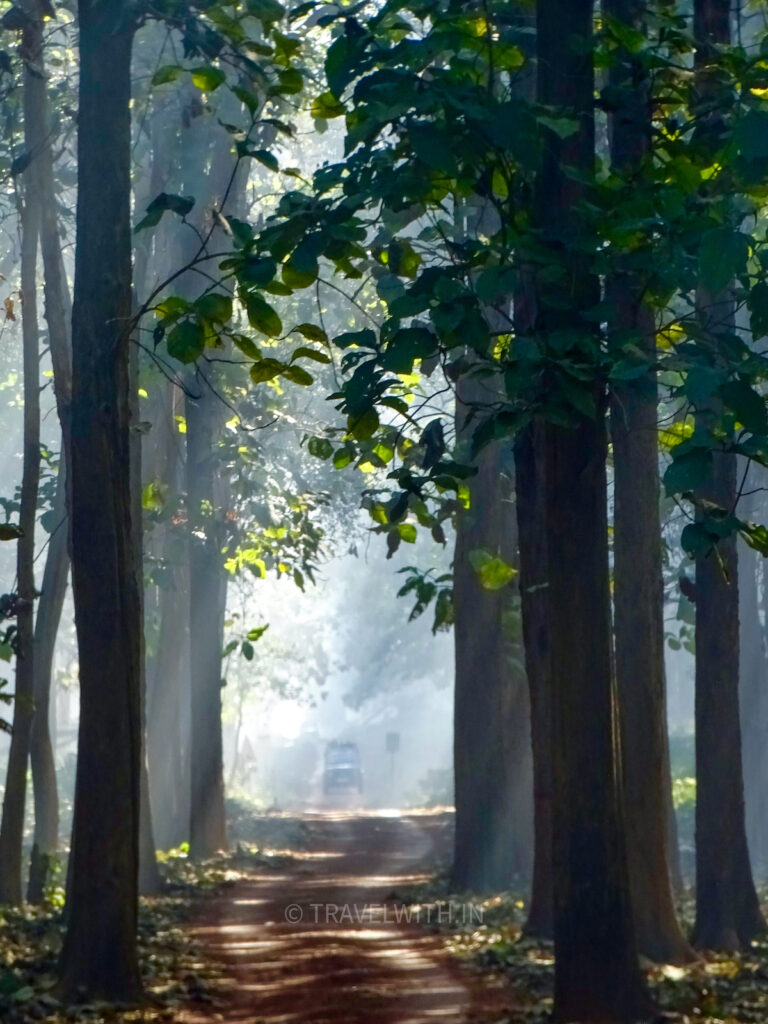
Sal Forests of Dudhwa
Other than the state of Assam, Dudhwa National Park is the only other place in India where you can find the one-horned rhino. Historically the entire Terai region had rhinos however, due to poaching the entire population was wiped out. Then in the 1980s a few rhinos were relocated to Dudhwa National Park from Assam. They were kept in a 35 sq. km long fenced and highly protected enclosure inside the national park. Other than forest officials no one was allowed to go inside this enclosure. Today, the rhino population has increased and there are 40+ and sometimes visitors are lucky to spot them along side this enclosure while on safari.
If you’re going to Dudhwa National Park then we recommend you stop in Lucknow for a night or two. Lucknow has a lot to see and offer but unfortunately it’s stunning built heritage is not highlighted as that of other cities in India. In our opinion, a single night in Lucknow is never enough but if you’re pressed on time then the must do and see in Lucknow are the local food (Awadhi cuisine – kebabs and curries) and the Imambaras.
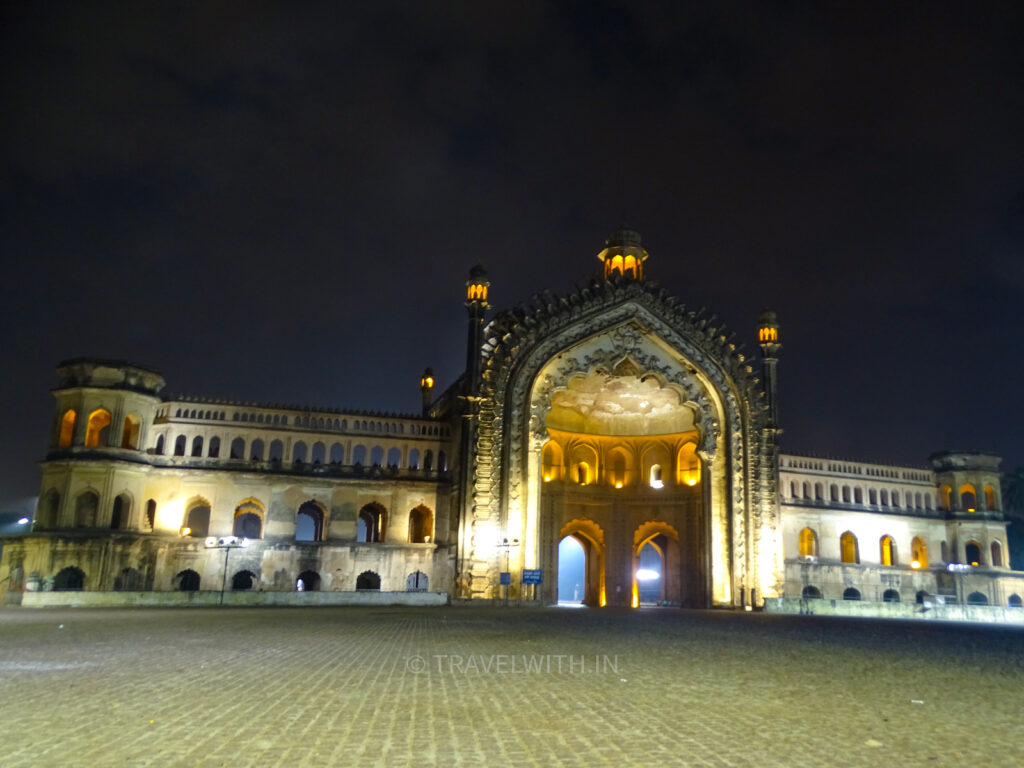
Rumi Darwaza at night in Lucknow
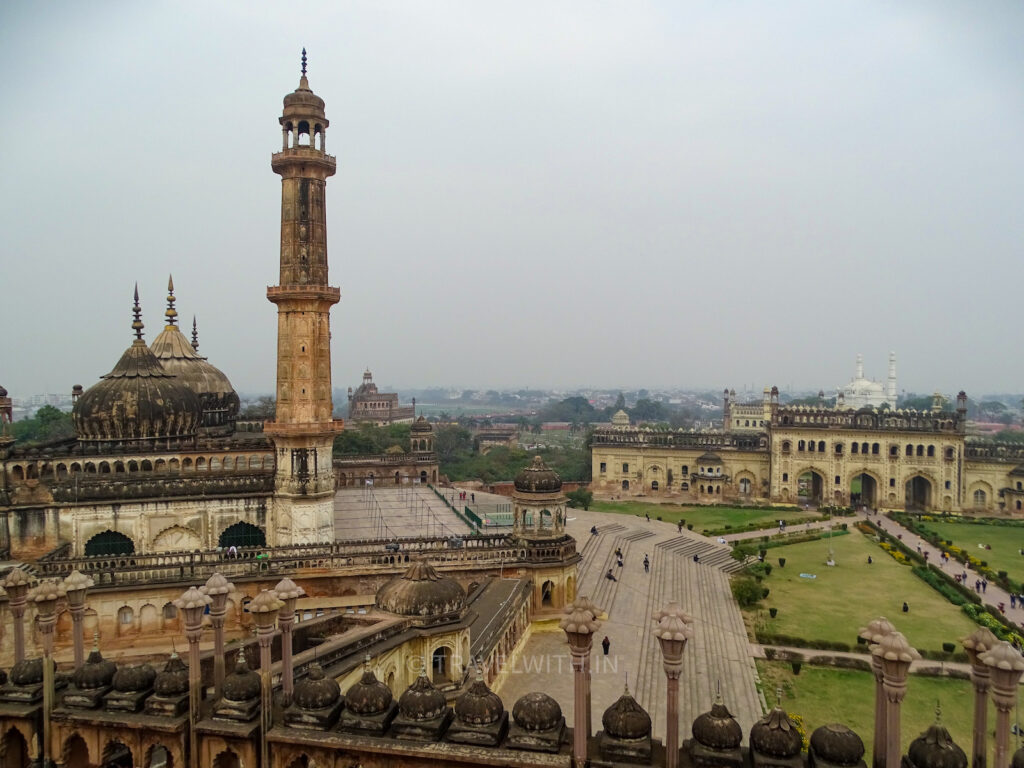
Bara Imambara
Steeped in history, Lucknow unfortunately does not see a large number of tourists as does Agra or Varanasi. However, it has much to do and see for the heritage enthusiast. It was part of the Delhi Sultanate in the 14th and 15the century and then came under the Mughal empire. After the Mughal empire disintegrated, the Nawabs took control of Awadh (former name of Lucknow) and eventually the British seized control after crushing the revolt of 1857 also known as the first war of India’s independence. A knowledgable guide can be arranged to take you sightseeing. There are plenty of hotels in the city that you can chose to stay in.
Four nights is what most do with one night in Lucknow and three in Dudhwa National Park. Dudhwa is a different ball game as compared to other national parks. It has beautiful dense sal forests with marshes and grasslands but the animals are shy as poaching was common in the region. This means you need more patience than ever if you want to see any wildlife. Then there are jeep safaris in the adjacent Kishanpur Wildlife Sanctuary (an hour drive) and Katarniaghat Wildlife Sanctuary.
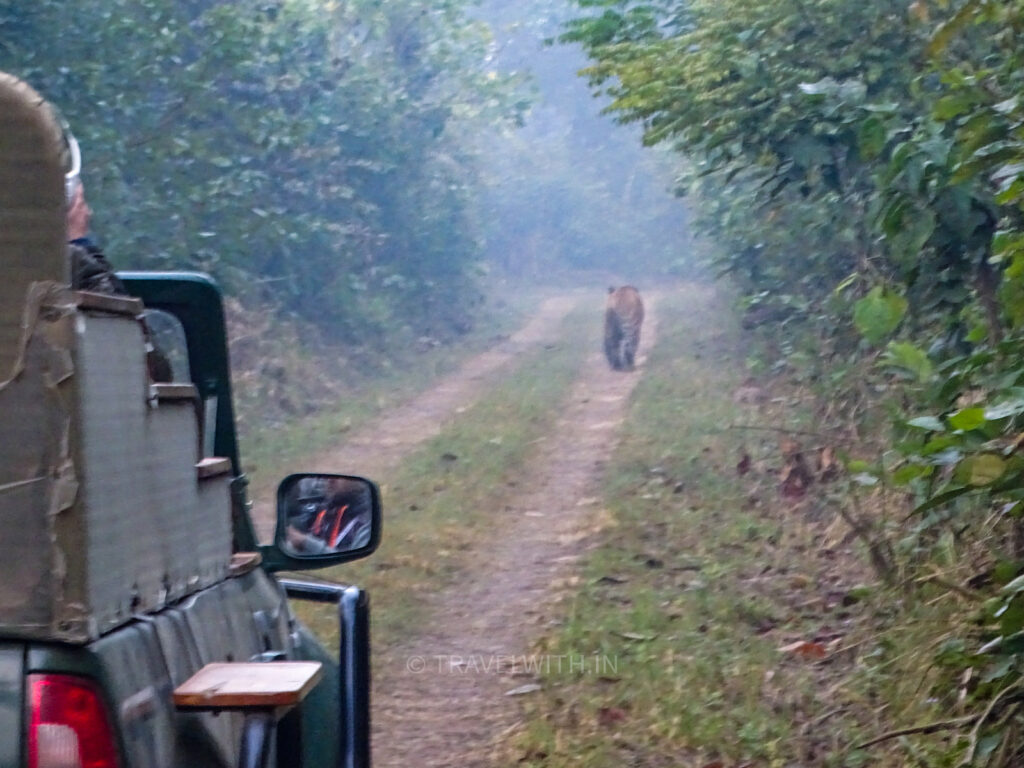
Tiger spotting on a foggy winter morning
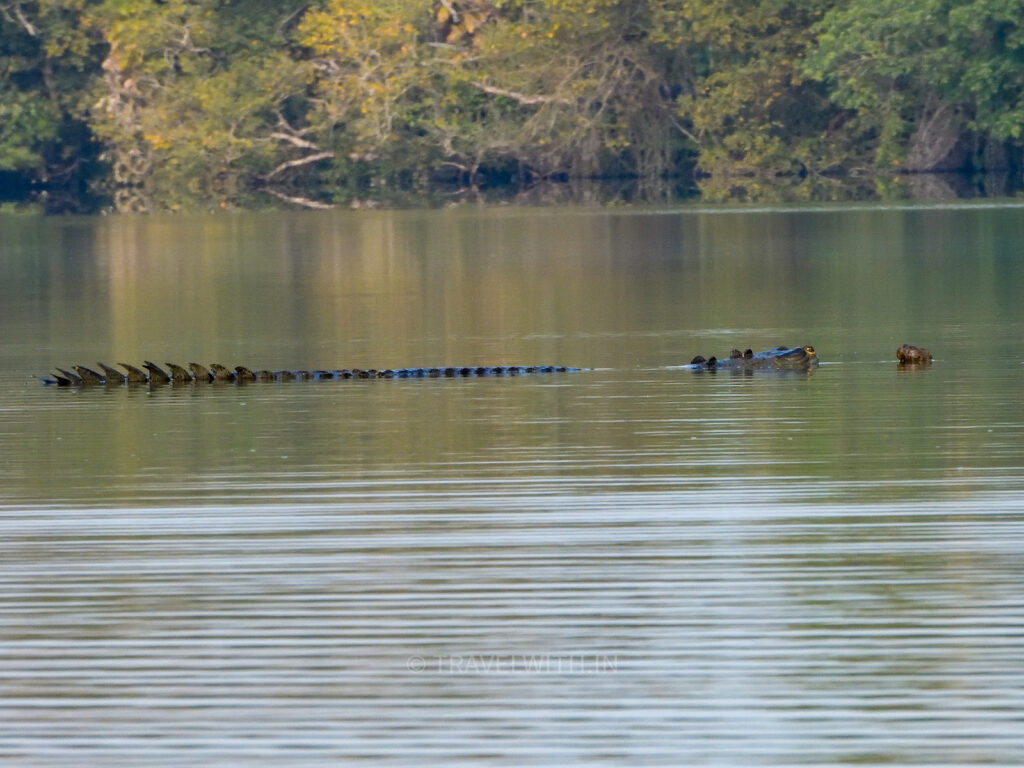
Male Gharial spotted during the river safari in Katarniaghat
Katarniaghat is also an hour drive and is well know for both the jeep and boat safari. During the boat safari you may spot endangered aquatic wildlife such as gharials and the more abundant mugger crocodiles. English speaking and experienced naturalists and guides can be arranged for the entire program.
To get to Dudhwa it is best if you fly in to Lucknow. With direct flights from Delhi, Agra and other cities, connectivity to the state’s capital is really good. From Lucknow, Dudhwa National Park is a 4-5 hour drive. Stay options in Dudhwa vary from luxury to basic. We don’t recommend staying in the basic hotels as the quality of services will most likely not live up to your expectations.

Termite hill standing tall
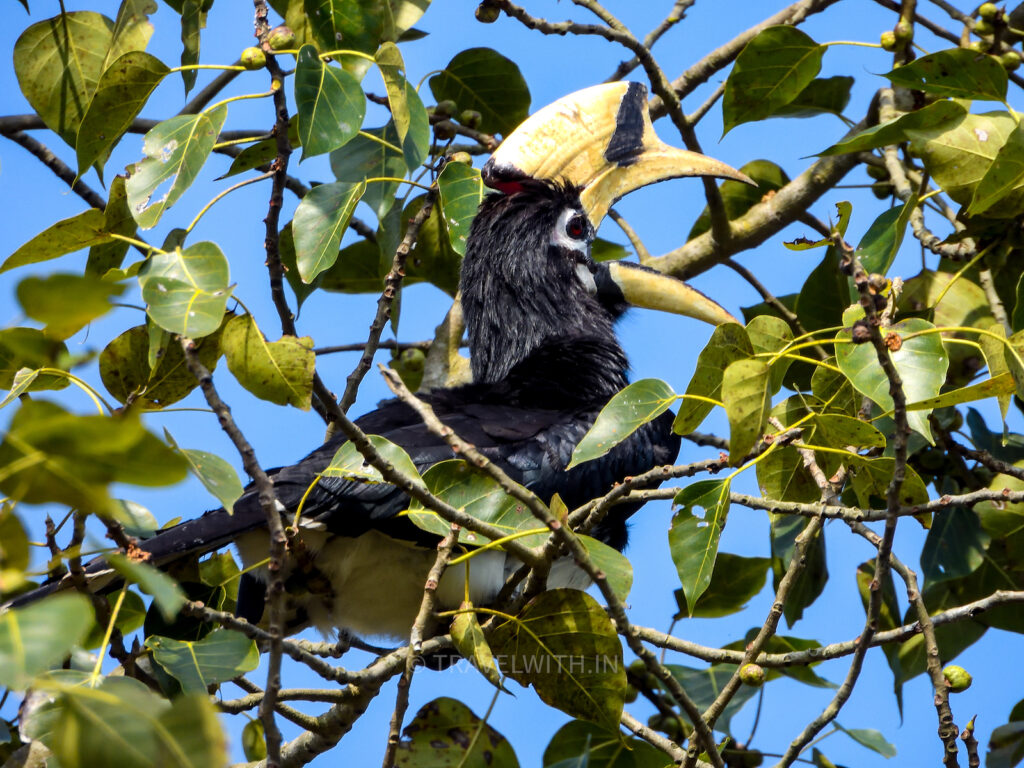
Pied Hornbill
Safaris in Dudhwa start from November 15 onwards. Winter season see the temperatures drop significantly but the days are nice and sunny. There is sometimes fog as well which is common in north and central India during the peak of winter. Apart from the wildlife, the park is home to over 300 species of birds from Bengal florican to Great slaty woodpeckers. It is no doubt a haven for birdwatchers.
When driving from Lucknow to Dudhwa, we strongly recommend a brief halt at the Narmadeshwar temple in Oel. Popularly known as the Frog temple or the Manduk Mandir in Hindi. This temple is richly decorated with carvings and is famed for ‘tantric’ worshipping. Dedicated to Lord Shiva, the sanctum of this very unusual looking temple is built on the back of a gigantic frog. It was established by the King of Oel in the 19th century. It is the only temple of it’s kind and definitely a must visit when in the region.
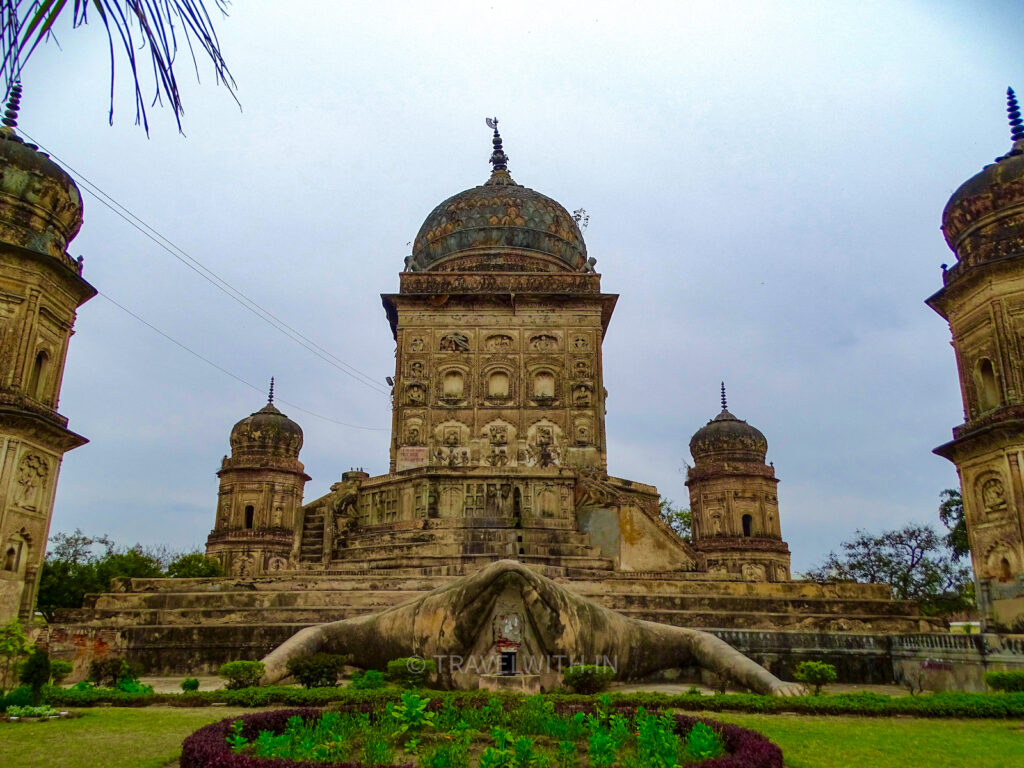
Manduk Mandir or Frog Temple in Oel
Please Note:
• There is no guarantee that you will see the above wildlife. The river and / or sanctuary is their habitat and sightings depend on water level in the river, human interference, climatic conditions, weather and other factors, migratory pattern of birds, most of which are beyond your and my control. We will do our best to show you all there is to see.
• What to carry during the safari: photo identification, camera, binoculars, warm jacket (in the winter), backpack, sun glasses, cap, vizer, sun block, cash, and drinking water.
• Smoking and drinking alcohol is strictly not permitted in National Parks and Wildlife Sanctuaries.
• Please do not throw trash on the floor even if you don’t see a trash can. Please ask me and I help to dispose it off properly.
• To prevent any disturbance to wildlife, we do not encourage the use of call playback to attract birds, feeding or baiting of wildlife.
